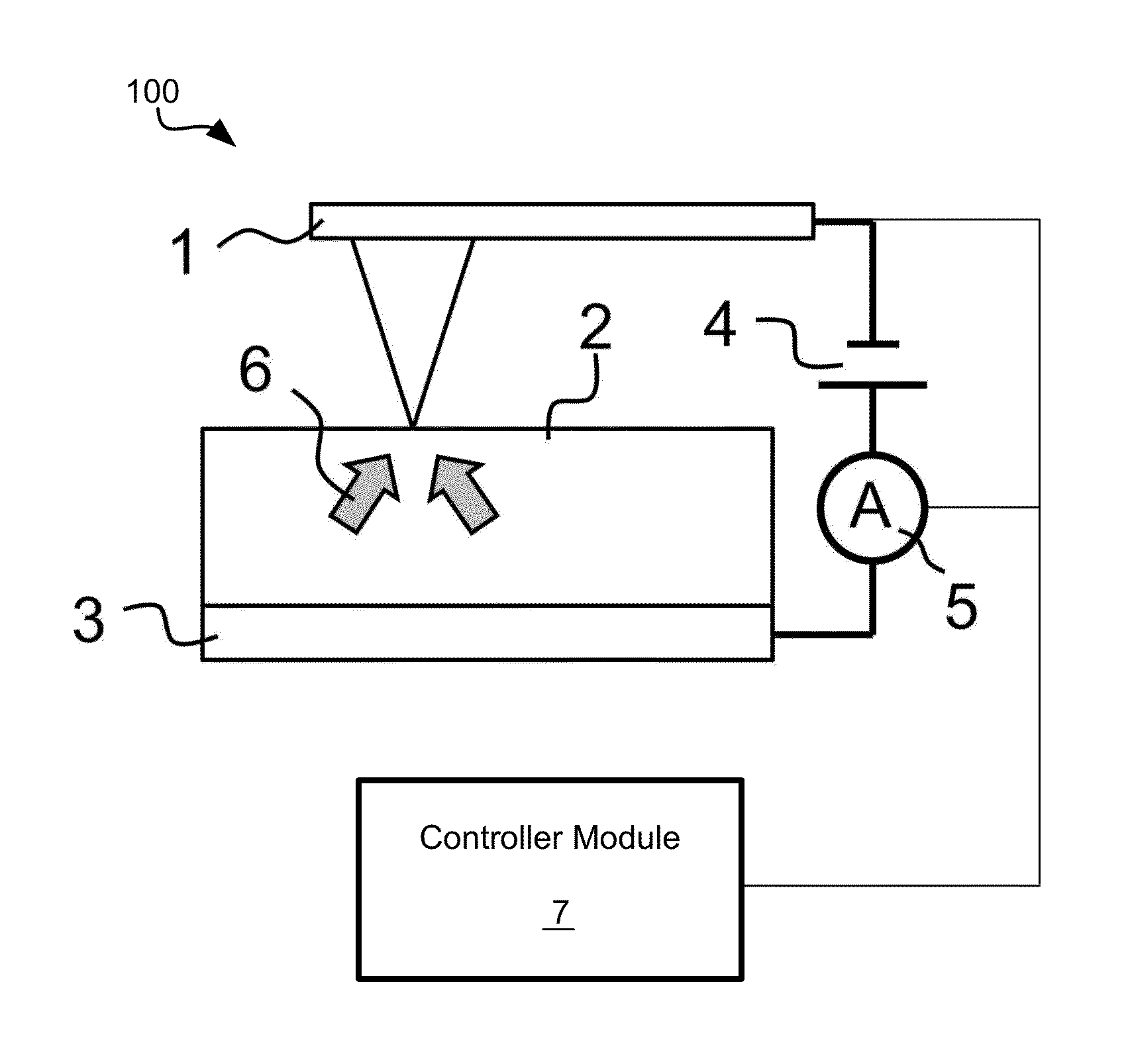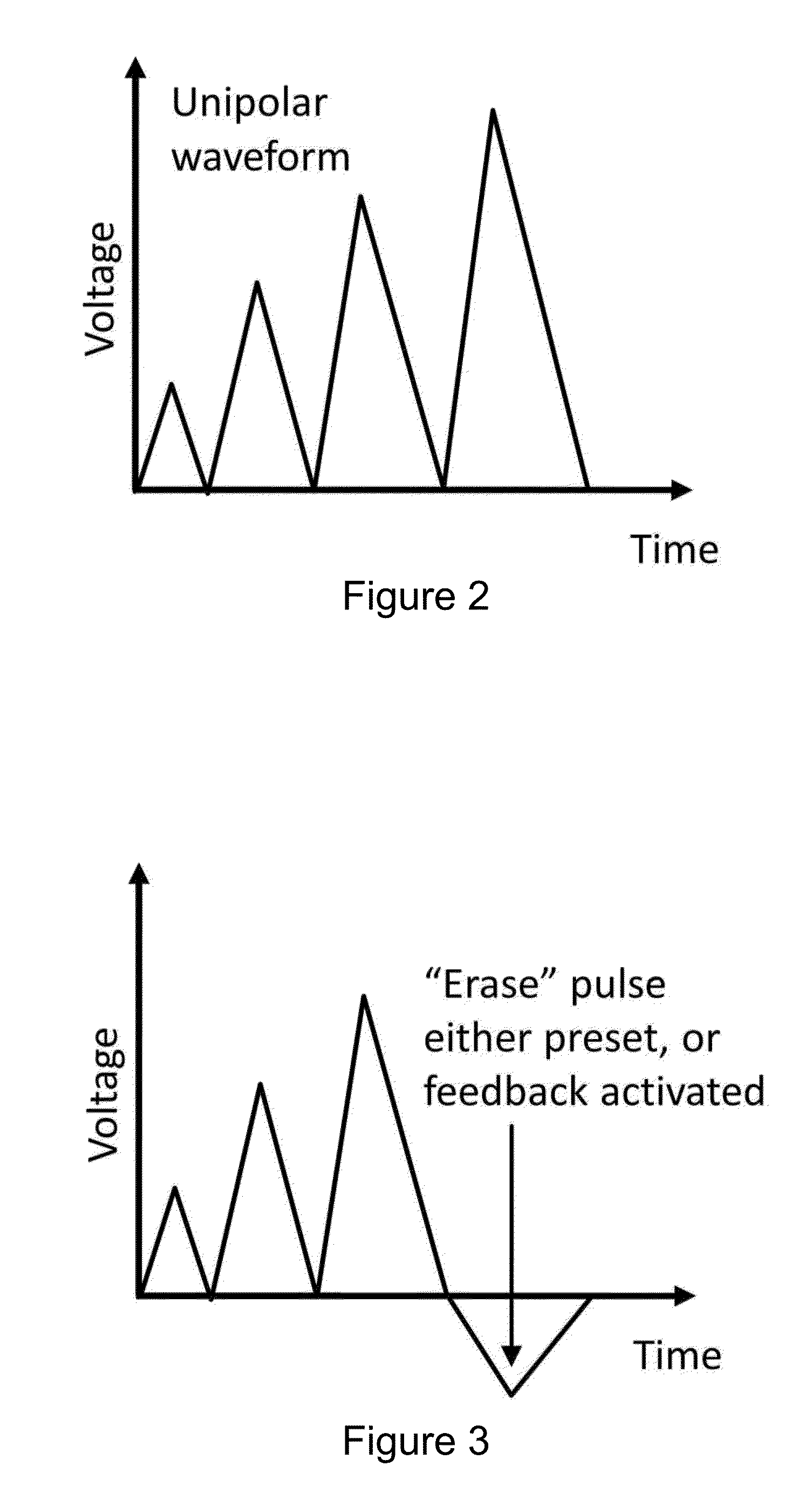Real space mapping of oxygen vacancy diffusion and electrochemical transformations by hysteretic current reversal curve measurements
a technology of hysteretic current and hysteretic current, applied in the field of measurement apparatuses and methods, can solve the problems of limited fuel cell implementation, low power density, and low energy density, and achieve the effect of increasing the maximal amplitude over tim
- Summary
- Abstract
- Description
- Claims
- Application Information
AI Technical Summary
Benefits of technology
Problems solved by technology
Method used
Image
Examples
Embodiment Construction
[0026]The described system maps ionic diffusion or electrochemical reactivity in a material. The system may probe ion diffusivity and electrochemical reactivity on nanometer length scales, within electrochemically active surfaces utilizing scanning probe microscopy (SPM) based techniques. The system may also probe ion diffusivity and electrochemical reactivity in packaged devices. The results may provide insight into energy conversion and energy storage device operation on a single structural element level. Such understanding of mechanisms in nanoscale structures including the interplay between interfacial electrochemical reactions, oxygen vacancy diffusion, and structural defects may contribute to the development of high energy density and high power density materials which may be used in, for example, secondary batteries, fuel cells and air-battery operation. Scanning probe microscopy (SPM) based techniques may provide high resolution imaging of various material properties in host...
PUM
 Login to View More
Login to View More Abstract
Description
Claims
Application Information
 Login to View More
Login to View More - R&D
- Intellectual Property
- Life Sciences
- Materials
- Tech Scout
- Unparalleled Data Quality
- Higher Quality Content
- 60% Fewer Hallucinations
Browse by: Latest US Patents, China's latest patents, Technical Efficacy Thesaurus, Application Domain, Technology Topic, Popular Technical Reports.
© 2025 PatSnap. All rights reserved.Legal|Privacy policy|Modern Slavery Act Transparency Statement|Sitemap|About US| Contact US: help@patsnap.com



